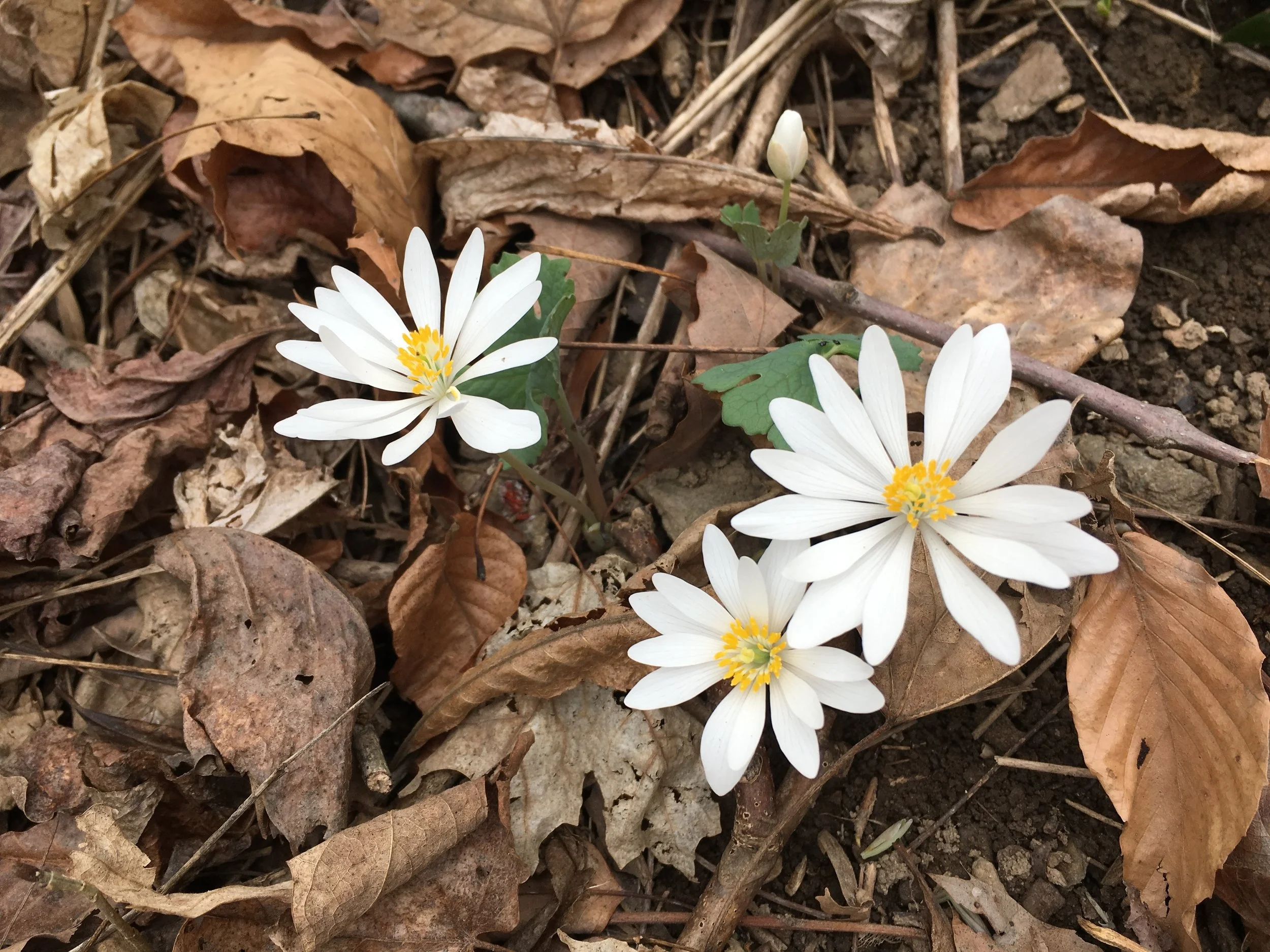Mountain Laurel

The spring fireworks display that takes over the forest understory from the Blue Ridge Mountains to the Chesapeake Bay.
Mountain Laurel (Kalmia latifolia) are my favorite flowers to see on the trail. Witnessing thousands of white and pink bursts across the forest or walking through a narrow twisty trail through a tunnel of Mountain Laurel are some of the things I look forward to the most on my Spring hikes.
A core memory for me is waking up early in Shenandoah NP one misty spring morning amongst the prolificaly blooming shrubs and the cacophony of songbirds.
Mountain Laurel is a striking evergreen shrub native to the eastern United States. It is renowned for its beautiful flowers and glossy, dark green leaves. The flowers, blooming in late spring to early summer, are distinctively cup-shaped, ranging in color from white to pink, often with intricatedeep red markings inside. These blossoms form in clusters, creating a visually stunning display against the backdrop of its leathery, lanceolate leaves.
Distribution and Habitat
This plant thrives in acidic, well-drained soils, commonly found in woodland areas, mountainous regions, and along riverbanks. It is a versatile species, capable of growing in both sunny and shaded environments, though it prefers the dappled light of mixed forests. Mountain laurels are predominantly found from Maine to Florida, and west to Indiana and Louisiana.
In Virginia, mountain laurels are especially prevalent in the Appalachian Mountains and the Piedmont region. They embellish the natural beauty of so many of our natural areas here. I’ve found them in abundance in the mountains of Shenandoah National Park all the way east to the mouth of the Potomac River in Westmoreland State Park. Wherever I find them, they they create picturesque scenes along hiking trails and mountain ridges.
Pollination of mountain laurels is primarily carried out by bees, particularly bumblebees. The plant's unique flower structure requires a strong pollinator capable of triggering the release of pollen. These plants play a significant role in their ecosystems by providing shelter and food for various wildlife species. They are also an important nectar source for pollinators.
Historical and Cultural Significance
Historically, the plant was used by Native Americans for medicinal purposes externally, though it should be noted that all parts of the plant are toxic if ingested. Even food products such as honey, like with Rhodendrons, can contain Grayanotoxins which can cause illness and sometimes is fatal.
The wood, being dense and fine-grained, has been used for carving and in the production of various small objects. In modern times, mountain laurels are primarily valued for their ornamental beauty, enhancing natural landscapes and gardens alike.
Photos
I am an avid hiker and amateur naturalist. I hike to satisfy that persistent curiosity of what of nature’s wonders lies just beyond the next bend.











